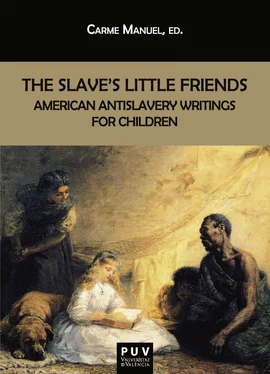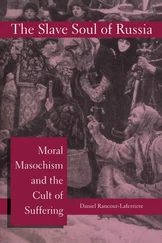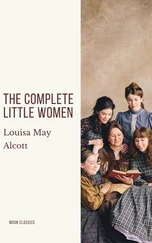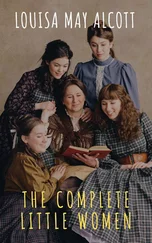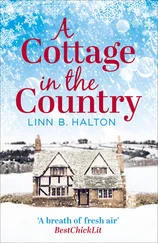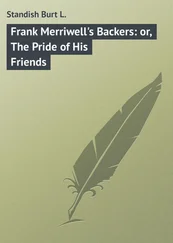Boylan, Anne M. Sunday School: The Formation of an American Institution, 1790-1880 .
Bradford, Clare. Unsettling Narratives: Postcolonial Readings of Children’s Literature . Waterloo, ON, Canada: Wilfrid Laurier University Press, 2007.
Brown, Ira V. “Miller McKim and Pennsylvania Abolitionism.” Pennsylvania History 30 (January 1963): 56-72.
Brown, Penny. “Capturing (and Captivating) Childhood: The Role of Illustrations in Eighteenth-Century Children’s Books in Britain and France.” Journal for Eighteenth-Century Studies 31.3 (2008): 419-449.
Brown, Sterling A. “A Century of Negro Portraiture in American Literature.” The Massachusetts Review 7.1 (Winter 1966):73-96.
Butchart, Ronald E. Normalizing Subordination: White Fantasies of Black Identity in Textbooks Intended for Freed Slaves in the American South, 1863-1870.” (Re)Constructing Memory: Textbooks, Identity, Nation, and State . Ed. James H. Williams & Wendy D. Bokhorst-Heng. Rotterdam, Boston, Taipei: Sense Publishers, 2016. 73-92.
Carey, Brycchan. British Abolitionism and the Rhetoric of Sensibility Writing, Sentiment, and Slavery, 1760-1807 . Basingstoke: Palgrave Macmillan, 2005.
Carey, Daniel and Lynn Fest, ed. The Postcolonial Enlightenment: Eighteenth-Century Colonialism and Postcolonial Theory . New York, Oxford: Oxford University Press, 2009.
Cartwright, Samuel. “I. Diseases and Peculiarities of the Negro Race.” De Bow’s Southern and Western Review XI. Vol. 1, nº 1 (July 1851): 64-69.
——. “II. The Diseases of the Negro Race—Pulmonary Congestions, Pneumonia, &c..” De Bow’s Southern and Western Review XI. Vol. 1, nº 2 (August 1851): 209-213.
——. “Concluded. Diseases and Peculiarities of the Negro Race.” De Bow’s Southern and Western Review XI. Vol. 1, nº 3 (September 1851): 331-336.
Child, Lydia Maria. The Mother’s Book . Boston: Carter, Hendee and Babcock, 1831.
Clapp, Elizabeth J. & Julie Roy Jeffrey, ed. Women, Dissent, and Anti-Slavery in Britain and America, 1790-1865 . New York, Oxford: Oxford University Press, 2011.
Clark, Elizabeth B. “‘The Sacred Rights of the Weak’: Pain, Sympathy, and the Culture of Individual Rights in Antebellum America.” Journal of American History 82.2 (September 1995): 463-493.
Connolly, Paula T. Slavery in America Children’s Literature, 1790-2010 . Chicago: University of Iowa Press, 2013.
Crain, Patricia. The Story of A: The Alphabetization of America from the ‘New England Primer’ to ‘The Scarlet Letter.’ Stanford: Stanford University Press, 2000.
Crandall, John C. “Patriotism and Humanitarian Reform in Children’s Literature, 1825-1860.” American Quarterly 21.1 (Spring 1969): 3-22.
Cutter, Martha J. The Illustrated Slave: Empathy, Graphic Narrative, and the Visual Culture of the Transatlantic Abolition Movement, 1800-1852 . Athens, Ga.: The University of Georgia Press, 2017.
——. “The Child’s Illustrated Antislavery Talking Book: Abigail Field Mott’s Abridgment of Olaudah Equiano’s Interesting Narrative for African American Children .” Who Writes for Black Children? African American Children’s Literature before 1900 . Ed. Katharine Capshaw and Anna Mae Duane, Minneapolis: University of Minnesota Press, 2017. 117-144.
Dahan, Nicolas M. and Milton Gittens. “Business and the Public Affairs of Slavery: A Discursive Approach of an Ethical Public Issue.” Journal of Business Ethics 92.2 (March 2010): 227-249.
Dalton, Karen C. Chambers. “‘The Alphabet Is an Abolitionist’: Literacy and African Americans in the Emancipation Era.” The Massachusetts Review 32.4 (Winter 1991): 545-580.
David, Linda. Children’s Books Published by William Darton and His Sons: A Catalogue of an Exhibition at the Lilly Library, Indiana University, April-June, 1992 . Bloomington, IN: Lilly Library, Indiana University, Bloomington, 1992.
Davidson, Cathy N. The Revolution and the Word: The Rise of the Novel in America . Expanded edition. 1986. New York: Oxford University Press, 2004.
Davis, David Brion. The Problem of Slavery in the Age of Revolution 1770-1823. Oxford: Oxford University Press, 1999.
Dean, Carolyn. “Boys and Girls and “Boys”: Popular Depictions of African-American Children and Childlike Adults in the United States, 1850-1930. Journal of American & Comparative Cultures 23.3 (Fall 2000): 17-35.
De Rosa, Deborah C. Domestic Abolitionism and Juvenile Literature, 1830-1865 . Albany: State University of New York Press, 2003.
De Rosa, Deborah C., ed. Into the Mouths of Babes: An Anthology of Children’s Abolitionist Literature . Westport, CT: Praeger, 2005.
Dolan, Elizabeth A. Seeing Suffering in Women’s Literature of the Romantic Era . Aldershot and Burlington: Ashgate, 2008.
Duane, Anna Mae. Suffering Childhood in Early America: Violence, Race, and the Making of the Child Victim . Athens, GA, USA: University of Georgia Press, 2010.
Elbert, Monika, ed. Enterprising Youth: Social Values and Acculturation in Nineteenth-Century American Children’s Literature . New York and London: Routledge, 2008.
Ellis, Markman. “Suffering Things: Lapdogs, Slaves, and Counter-Sensibility.” The Secret Life of Things: Animals, Objects, and It-Narratives in Eighteenth-Century England . Ed. Mark Blackwell. Lewisburg, PA: Bucknell University Press, 2007. 92-116.
Faust, Drew Gilpin. “Introduction: The Proslavery Argument in History: The Ideology of Slavery: Proslavery Thought in the Antebellum South, 1830-1860 . Ed. Drew Gilpin Faust. Baton Rouge: Louisiana State University Press, 1981. 1-20.
Ferguson, Moira. Subject to Others: British Women Writers and Colonial Slavery, 1670 - 1834 . New York: Routledge, 1992.
Ferrell, Claudine L. The Abolitionist Movement . Westport, Connecticut-London: Greenwood Press, 2006.
Festa, Lynn. Sentimental Figures of Empire in Eighteenth-Century Britain and France . Baltimore: Johns Hopkins University Press, 2006.
Fielder, Brigitte Nicole. “Animal Humanism: Race, Species, and Affective Kinship in Nineteenth-Century Abolitionism.” American Quarterly 65.3 (September 2013): 487-514.
——. “‘Those people must have loved her very dearly’: Interracial Adoption and Radical Love in Antislavery Children’s Literature.” Early American Studies 14.4 (2016): 749-780.
Fiesta, Melissa. “Homeplaces in Lydia Maria Child’s Abolitionist Rhetoric, 1833-1879.” Rhetoric Review 25.3 (2006): 260-274.
Fish, Audrey. American Slaves in Victorian England: Abolitionist Politics in Popular Literature and Culture . Cambridge and New York: Cambridge University Press, 2000.
Fisher, Philip. Hard Facts: Setting and Form in the American Novel . New York, Oxford: Oxford University Press, 1987.
Freeman, Elizabeth. Beside You in Time: Sense Methods and Queer Sociabilities in the American Nineteenth Century . Durham and London: Duke University Press, 2019
Fredrickson, George M. The Black Image in the White Mind: The Debate on Afro-American Character and Destiny, 1817-1914 . New York: Harper: Torchbooks, 1972.
Geist, Christopher D. “ The Slave’s Friend : An Abolitionist Magazine for Children.” American Periodicals 9 (1999): 27-35.
Ginsberg, Lesley. “Of Babies, Beasts, and Bondage: Slavery and the Question of Citizenship in Antebellum American Children’s Literature.” The American Child: A Cultural Studies Reader . Ed. Caroline F. Levander and Carol J. Singley. Piscataway, NJ: Rutgers University Press, 2003. 85-105.
Читать дальше
